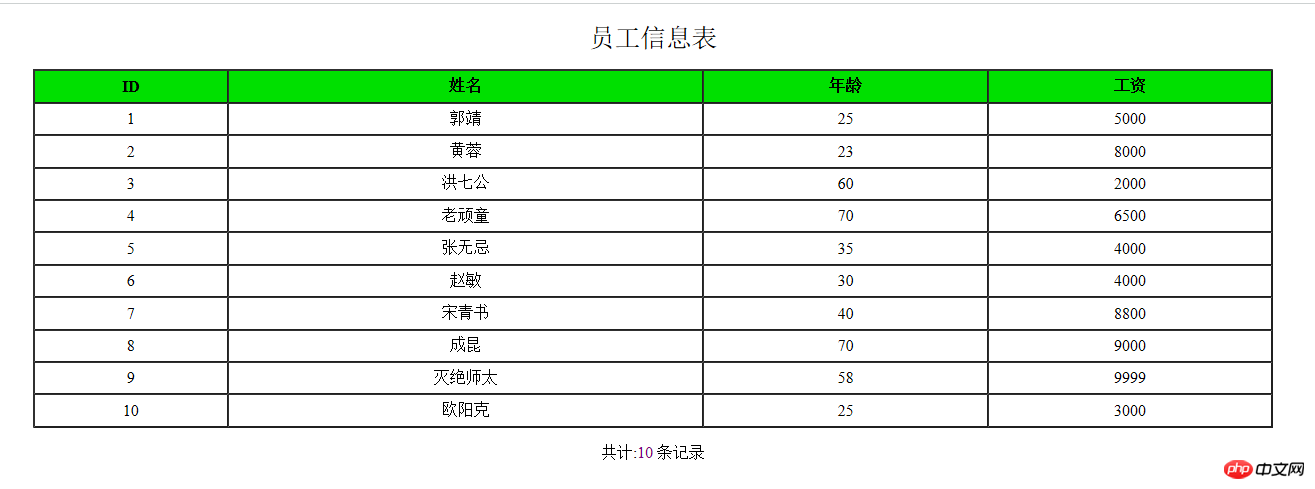使用方法重载与call_user_func_array()模拟TP框架的链式查询
实例
<?php
class Query{
// 保存sql语句中的各个组成部分
private $sql = [];
// 数据库的连接对象
private $pdo = null;
//构造方法: 连接数据库
public function __construct()
{
// 连接数据库并返回pdo对象
$this->pdo = new PDO('mysql:host=127.0.0.1;dbname=php','root','root');
}
// table()获取sql语句的表名
public function table($table){
$this->sql['table'] = $table;
return $this; //返回当前类实例对象,便于链式调用该对象的其它方法
}
// fields()获取sql语句的字段列表
public function fields($fields){
$this->sql['fields'] = $fields;
return $this;
}
// where()获取sql语句的查询条件
public function where($where){
$this->sql['where'] = $where;
return $this;
}
//执行查询,是一个终级方法
public function select(){
//拼装SELECT查询语句
// SELECT 字段列表 FROM 表名 WHERE 条件
$sql = "SELECT {$this->sql['fields']} FROM {$this->sql['table']} WHERE {$this->sql['where']}";
$stmt = $this->pdo->prepare($sql);
$stmt->execute();
return $stmt->fetchAll(PDO::FETCH_ASSOC);
}
}运行实例 »
点击 "运行实例" 按钮查看在线实例
实例
<?php
// Db::table()->fields()->where()->select();
require 'Query.php';
// 数据库操作的入口类
class Db{
public static function __callStatic($name, $arguments)
{
//call_user_func_array([类名, 方法],[])
//call_user_func_array([对象, 方法],[])
return call_user_func_array([(new Query()),$name],$arguments);
}
}
$result = Db::table('staff')
->fields('staff_id,name,age,salary')
->where('staff_id <= 10')
->select();
// 用表格将查询结果格式化输出
$table = '<table border = "1" cellpadding = "6" cellspacing = "0" width = "65%" align = "center">';
$table .= '<caption style = "font-size:1.6rem;margin:15px;">员工信息表</caption>';
$table .= '<tr bgcolor="grey;"><th>ID</th><th>姓名</th><th>年龄</th><th>工资</th></tr>';
foreach ($result as $staff){
$table .= '<tr align ="center">';
$table .= '<td>'.$staff['staff_id'].'</td>';
$table .= '<td>'.$staff['name'].'</td>';
$table .= '<td>'.$staff['age'].'</td>';
$table .= '<td>'.$staff['salary'].'</td>';
$table .= '</tr>';
}
$table .= '</table>';
$num = '<p style = "text-align:center">共计:<span style="color:purple">'.count($result).'</span> 条记录</p>';
echo $table,$num;运行实例 »
点击 "运行实例" 按钮查看在线实例

后期静态绑定的原理与使用场景分析
引入后期静态绑定的目的是:用于在继承范围内引用静态调用的类。
所以, 可以用后期静态绑定的办法解决单例继承问题。

